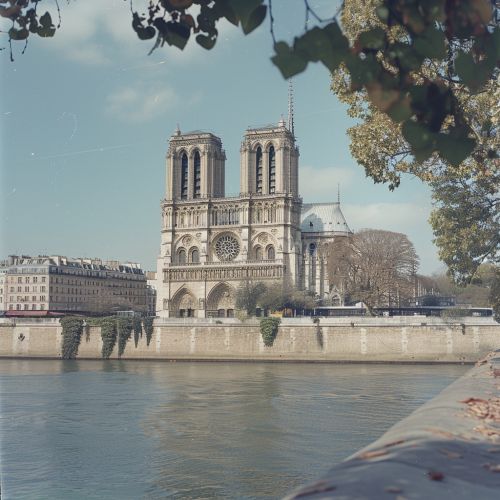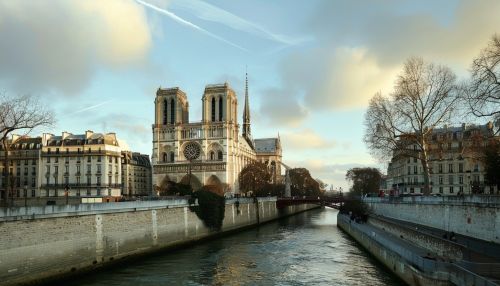Notre-Dame Cathedral
History
The Notre-Dame Cathedral is one of the most iconic structures in Paris, France. Its construction began in the 12th century under the reign of Louis VII and was completed in the 14th century. The cathedral is considered a masterpiece of French Gothic architecture, and despite the damages it has suffered over the centuries, it still stands as a symbol of French heritage and Christian faith.


The cathedral's construction was initiated by Maurice de Sully, the Bishop of Paris, who wished to replace the existing Romanesque church with a larger, more imposing cathedral. The construction was a massive undertaking that involved the entire community, from skilled craftsmen and laborers to the clergy and the local populace. The cathedral was built using a new architectural technique known as the rib vault, which allowed for the creation of higher and more spacious interiors.
Architecture
Notre-Dame Cathedral is renowned for its French Gothic architecture, characterized by its pointed arches, rib vaults, and flying buttresses. The cathedral's façade is adorned with numerous statues and gargoyles, which serve both a decorative and functional role. The cathedral's interior is equally impressive, with its high vaulted ceilings, stained glass windows, and intricate woodwork.
The cathedral's most distinctive features are its twin towers, which stand at 69 meters high, and the central spire, which was added in the 19th century during a major restoration project led by architect Eugène Viollet-le-Duc. The spire was unfortunately destroyed in the 2019 fire, but plans are underway to rebuild it.
Art and Treasures
Notre-Dame Cathedral houses a vast collection of art and treasures, some of which date back to the Middle Ages. These include numerous statues, altarpieces, and reliquaries, as well as the cathedral's three large rose windows, which are considered among the greatest masterpieces of Christian art.
One of the most revered treasures of Notre-Dame is the Crown of Thorns, which is believed to be the one worn by Jesus Christ during his crucifixion. The cathedral also houses other important relics, such as a fragment of the True Cross and one of the Holy Nails.
Impact and Influence
The influence of Notre-Dame Cathedral extends beyond its architectural significance. As one of the most important cathedrals in France, it has played a central role in French religious and political history. It was here that Napoleon Bonaparte was crowned Emperor of France in 1804, and it has been the site of numerous other coronations and funerals.
The cathedral has also inspired numerous works of art and literature, most notably Victor Hugo's novel "The Hunchback of Notre-Dame", which played a significant role in raising awareness about the cathedral's decaying state in the 19th century and led to a major restoration project.
Restoration and Conservation
Over the centuries, Notre-Dame Cathedral has undergone several restoration and conservation projects. The most significant of these was the 19th-century restoration led by Eugène Viollet-le-Duc, which saw the addition of the cathedral's central spire and the replacement of many of its statues and gargoyles.
In recent years, the cathedral has faced numerous challenges, including pollution damage and structural instability. The most devastating event was the 2019 fire, which destroyed the cathedral's spire and roof and caused significant damage to its interior. Since then, a major restoration project has been underway to restore the cathedral to its former glory.
